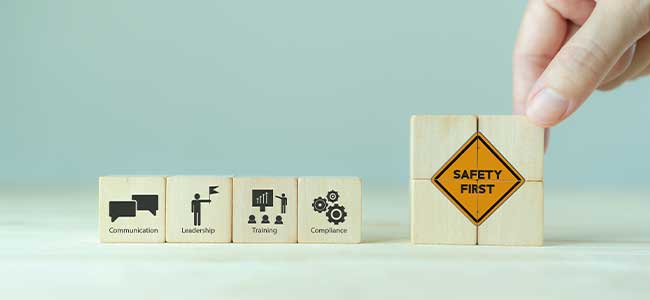
Paradoxical Safety: Going Beyond ‘Best Intentions’
Well-intended safety interventions can backfire in the workplace, as illustrated through real-world cases and practical leadership strategies to enhance safety effectively.
- By Robert Pater
- May 01, 2024
Do you ever think you’ve discovered a potentially promising solution to a vexing safety problem only to find it backfired or actually made things worse?
According to a study in the U.S. National Library of Medicine, “A reaction is called paradoxical when a substance that is generally therapeutically effective induces the opposite of what is intended.” In other words, these are more than side effects; they are when the medication incites the exact opposite effect it’s meant to have, such as pain medication that actually makes pain worse or anti-inflammatories that actually increase inflammation. This occurs in safety as well as medicine. Here are two instances:
First Case Example
A Fortune 500 manufacturer of large transportation equipment was concerned that their riveters were experiencing an increasing raft of vibration-related upper limb injuries.
The understandable reflexive response from their ergonomics team? Replace existing riveting guns with recoilless ones with a spring-like mechanism designed to absorb, not transfer, forces away from riveters. That sounds good, except after disseminating these well-made tools, upper limb injuries sharply rose further.
Initial reactions ranged from head-scratching to blaming the tools or the workers, but some wiser and calmer heads prevailed. One revisited the original intention: to ultimately help riveters reduce injuries in real practice, not just to mechanically lower those external forces they assumed riveters would otherwise absorb. Going back to workers, but this time with a mindset of asking rather than prescribing, the ergonomists discovered that, in riveters’ view, the new guns made their work more difficult, not easier.
Those interviewed revealed they relied on a kinesthetic “feel” for the set of a rivet, and the new guns made it harder to sense this. To compensate for the new rivet guns absorbing vibration, the riveters were increasing extra force to compress the springs in the guns (to simulate the feel of the old guns), thereby working with greater effort and lessened potential safety — unexpected and just the opposite of what the ergonomists were shooting for.
The wise ergonomists decided to set up a “lab” where riveters could practice and learn to “recalibrate” their kinesthetic feeling of setting rivets with the new guns on scrap pieces of metal. Riveters varied in how much time they required to “get it,” but once time pressures and concerns about damaging material were taken off, everyone did — and injuries considerably dropped.
Second Case Example
Many safety checklists default to positioning work as close to a worker as possible. However, at least one company found this can backfire; sometimes, too much of a “good thing” can have negative effects. (Perhaps akin to overdosing on a needed medication?)
In this example, workers were transferring product off a moving conveyor belt to pallets and were experiencing a high level of soft-tissue injuries. To alleviate these, leaders had the pallets repositioned much closer to the employees to reduce the number of steps they spent.
However, lower back and shoulder injuries paradoxically skyrocketed. Why? The pallets were moved so close to the conveyor that workers wound up twisting with each movement, exacerbating cumulative forces on their lower backs. So, leaders moved the pallets just far enough away that even larger workers had to take a step to reach them. Also, leadership began training in safe pivoting and more.
Safety paradoxes occur well beyond just tooling and workstation layout. Have you seen attempts at spurring worker engagement — such as publicly calling on people to “volunteer” — turn some off, creating disconnect? Or policies intended to be thorough in elevating safety but that were so long few could remember and apply them? Or ambitiously detailed incident reports that were seen as an obstacle and therefore not thoughtfully filled out?
In many cases, good intentions can collide with human nature, especially when the quest for information or overly orchestrating specific worker actions is seen as a mixed message, conflicting with other directives to “get it done as quickly as possible.”
Intentional Leadership
What to do? Go beyond just “good intentions” and instead encourage leaders to become more “intentional.”
• First, with input across the board, determine what and where might be the mixed messages around safety in your organization
• Specifically, ask and determine if there have been any safety policies, tooling, training, etc., where the intent has backfired, making it more difficult or riskier to perform tasks.
• Make sure, when unearthing any paradoxical interventions, that you record these as neutrally as possible without defensiveness (that will shut off the spigot of future honest reports.)
• Prefer an “in vivo” approach to an “in vitro” one. “In vitro” (in the lab) solutions tend to be theoretical and often assume ideal conditions, such as a motivated, top-form workforce that will follow all directions. “In vivo” (in real life) interventions more mindfully account for physical and mental conditions. Strong leaders understand real safety must happen in the real world.
One “in vitro” approach to preventing soft-tissue injuries is the NIOSH Revised Lifting Equation. It doesn’t apply to lifting that is one-handed, seated, kneeling, in restricted workspace, at high speed, with unstable loads, where coupling/coefficient of friction on the surface is not amply high while carrying/pushing/pulling, with wheelbarrows, outside of ideal temperatures, etc.
• Develop and monitor leading indicators that any “solution” is moving you closer towards, not away from” desired results.
All this reveals one fundamental “secret” to safety success: Be more watchful of actual results beyond good intentions.
This article originally appeared in the April/May 2024 issue of Occupational Health & Safety.